Dinghy & Outboard Motor - Part 3
--Blogpost written by Bob
We took delivery of our new APEX 10 Lite Aluminum RIB this week. We purchased it back in late-March but decided to take delivery while our sailboat was hauled out in Galesville. Fawcetts delivered it from their facility in Annapolis to us at Hartge Yacht Harbor.
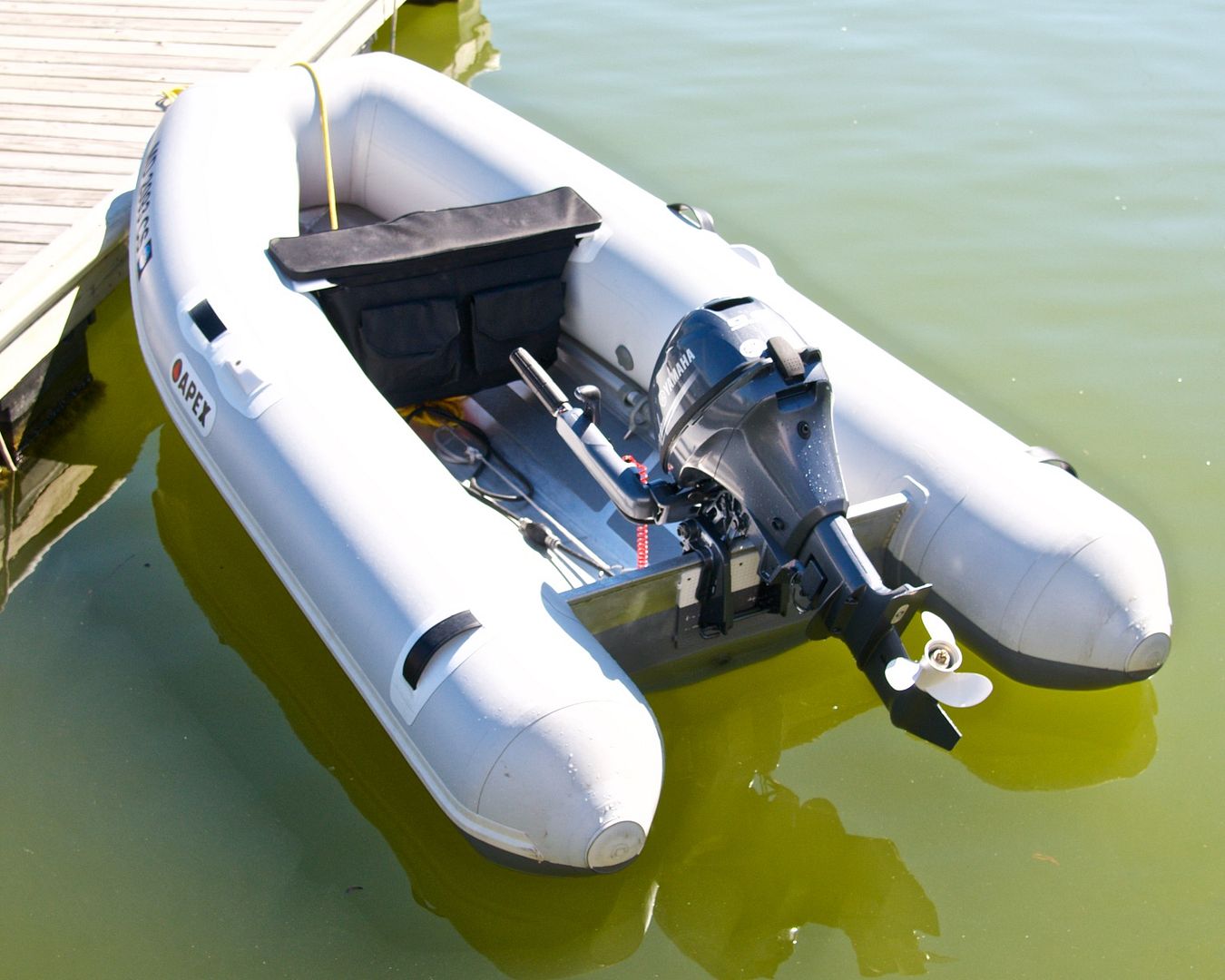 |
| Our new dinghy tied to the floating dock at Hartge Yacht Harbor where we took delivery. |
With the new Yamaha 9.9 HP 4-stroke engine, the performance of this dinghy is roughly equivalent to my old (much heavier) APEX A-10 with it's Johnson 15 HP 2-stroke engine--this is because the new RIB is nearly 50 pounds lighter than the old one.
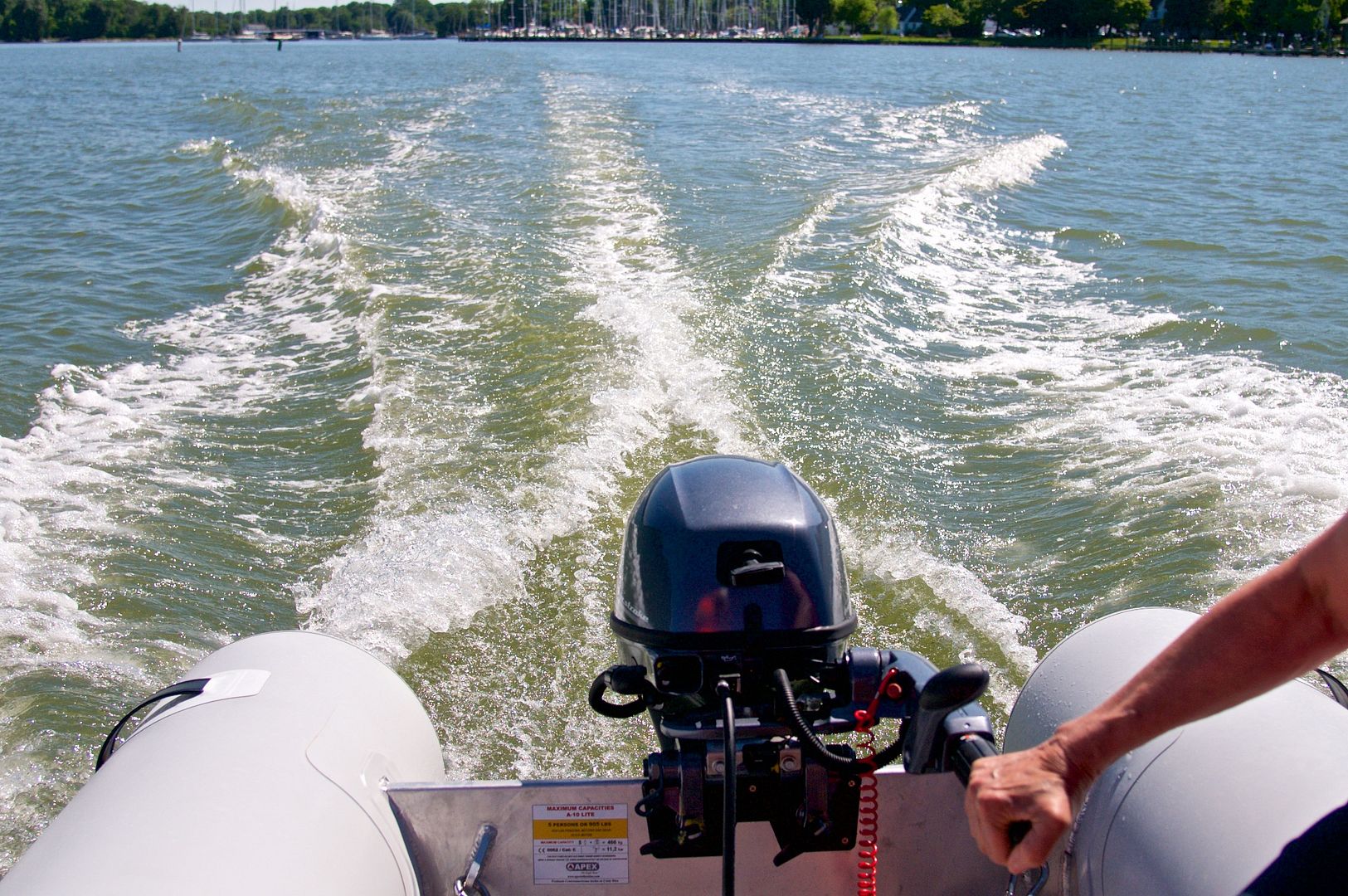 |
| The Yamaha 9.9 seems to be a perfect engine for this lightweight RIB. It easily gets up on a plane with two of us on board. |
APEX A-10 Lite Aluminum RIB
The aluminum hull on this dinghy is approximately 1/8-inch thick--it certainly appears very substantial. The transom is nearly 1-1/4-inch thick and is made of two or more plies of aluminum. Even though there is not a flat floor in this RIB, the inside surface is covered with rubber treads for maximum traction on the sloping floor.
The RIB (Rigid-hull Inflatable Boat) has 3 heavy-duty lifting lugs on both the inside and outside of the dinghy--they are a whopping 7/16-inch thick.
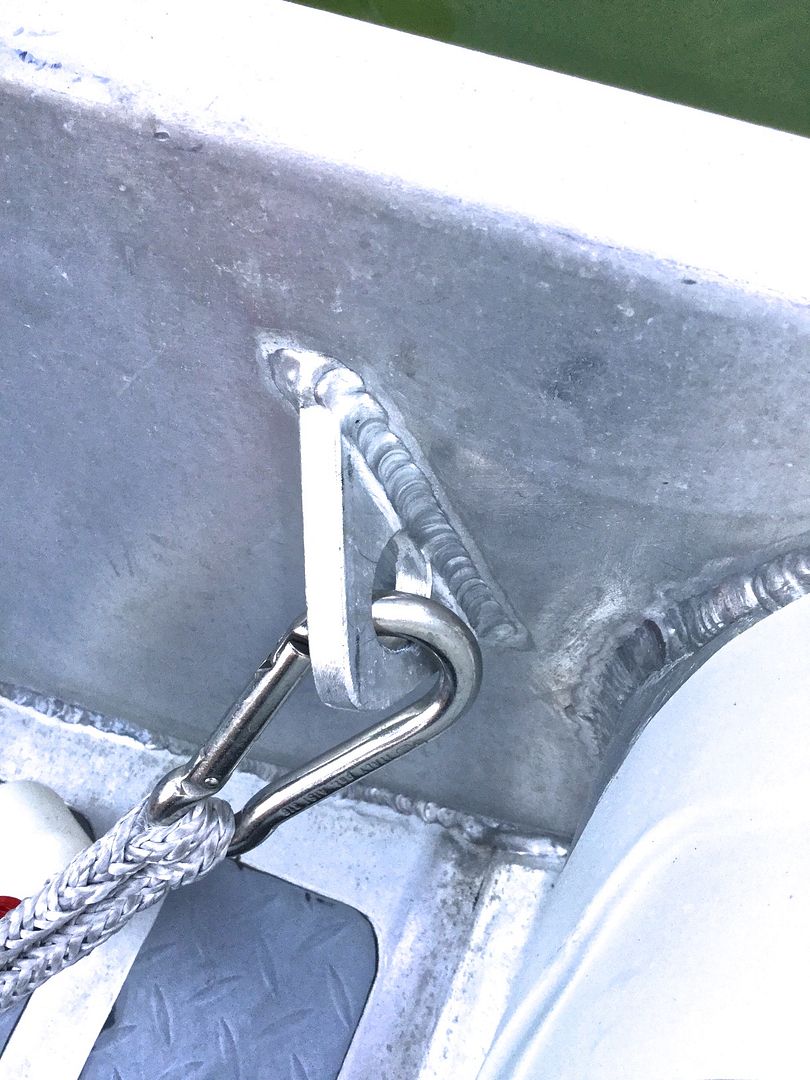 |
| The lifting lugs are 7/16-inch thick! |
The light weight (less than 100 pounds) of this 10-foot dinghy is impressive. It is easily carried by two people. We will provide more information in a future blogpost about how easily it can be lifting onto the foredeck of s/v Rainy Days.
Yamaha 9.9 HP 4-stroke Engine
The new Yamaha 4-stroke engine seems so much tighter (you might call it stiffer) than our old Johnson 2-stroke outboard. My impression is that it is a little quieter too. The throttle controls and steering are both stiffer than our old Johnson outboard.
The Yamaha 9.9 HP 4-stroke engine is about the same weight as our old Johnson 15 HP 2-stroke engine. It was quite a job getting the engine onto the dinghy from the floating dinghy dock. Of course, the lifting task onto s/v Rainy Days will be much easier because of the outboard motor lift we previously installed in mid-March.
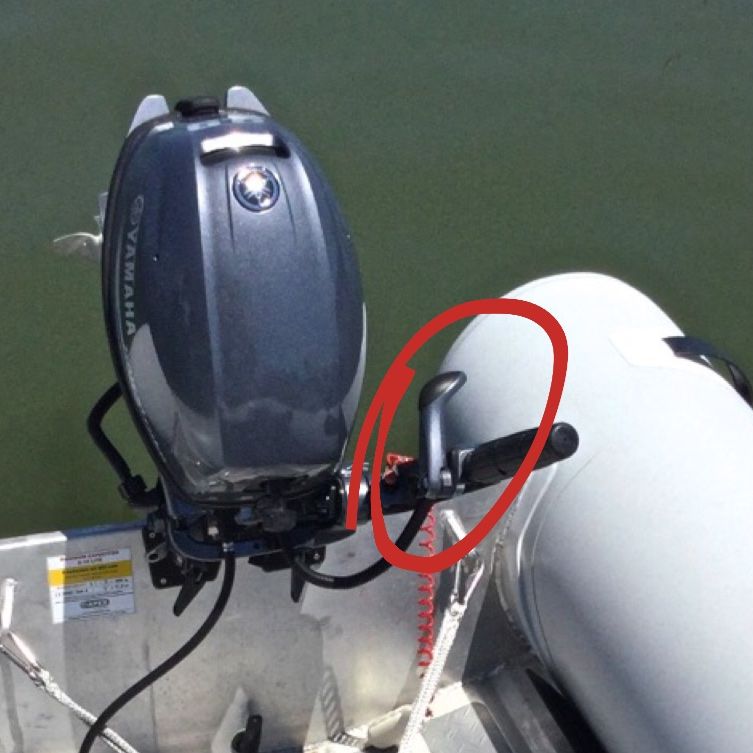 |
| The gearshift (circled in red) is well forward on the steering arm of the engine. This makes maneuvering in tight spaces much easier. |
The shift lever is located in the middle of the steering arm, making it possible to shift gears and steer using the same hand when maneuvering in close quarters. The steering arm is quite long and is very comfortable to use from the normal steering station sitting on the aft section of either side.
After starting the motor about a dozen times or so, it has not failed to start on the first pull yet (except when I forgot to insert the key). We will be making this engine into a "cruiser's engine" by applying many colorful decals so it will be easily identifiable and not be so desirable to dinghy thieves.
Three-gallon Portable Gas Tank
We selected a 3-gallon portable (plastic) gas tank for use in the dinghy because it was relatively light weight and easy to handle. It should provide us with ten to twelve hours of motoring.
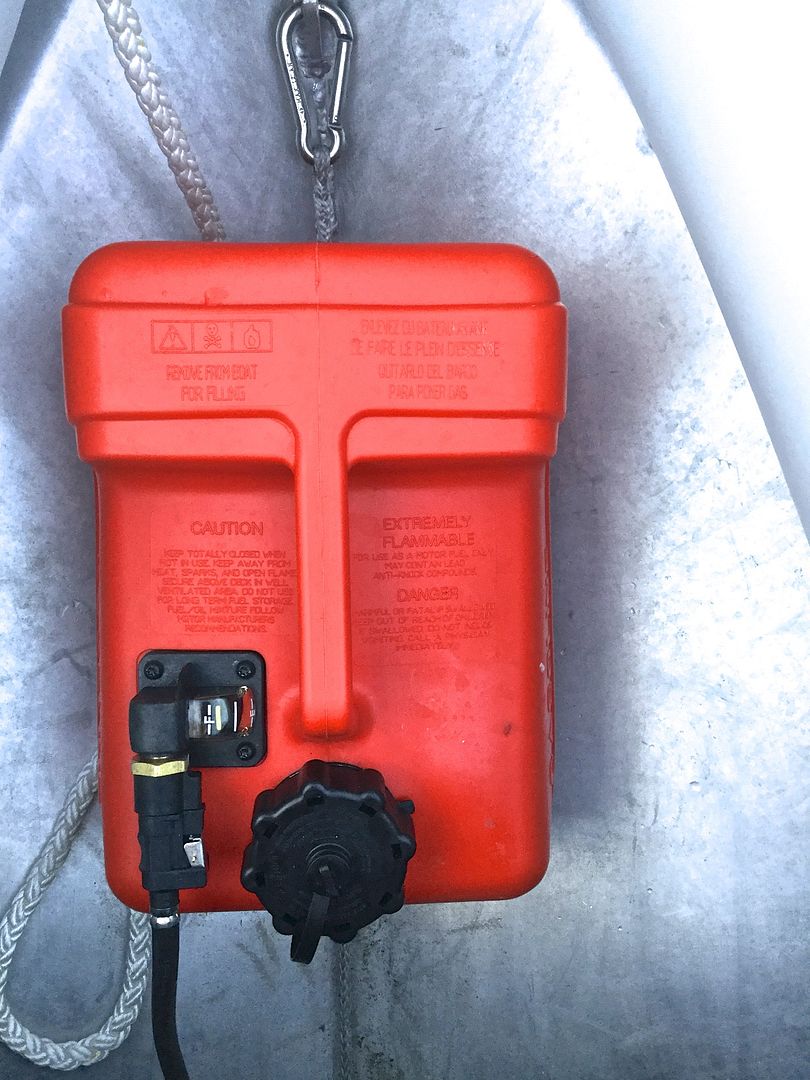 |
| We have two 3-gallon portable plastic gas tanks. |
We will be carrying two five-gallon jerry jugs of gasoline when we cruise. Noting the difficulty involved in transferring gasoline from the 5-gallon jerry jugs to the 3-gallon portable tank, we bought a spare 3-gallon tank (which we keep full) and we purchased a siphon to use specifically so we don't accidentally spill gasoline when filling the smaller 3-gallon tanks.
Using Ethanol-free Gasoline
Rather than deal with the ethanol in gasoline and its negative impact on small engines, particularly outboards, we just filled our two red Jerry jugs with ethanol-free gasoline from Lee Airport, just south of Annapolis. The cost of the ethanol-free gasoline was $5.50 per gallon (about twice that for normal road use) and it's 100 octane, intended for small airplanes.
I remember all too well the ethanol issues with my old Johnson 15 HP 2-stroke outboard and we want to avoid all that with our brand new engine.
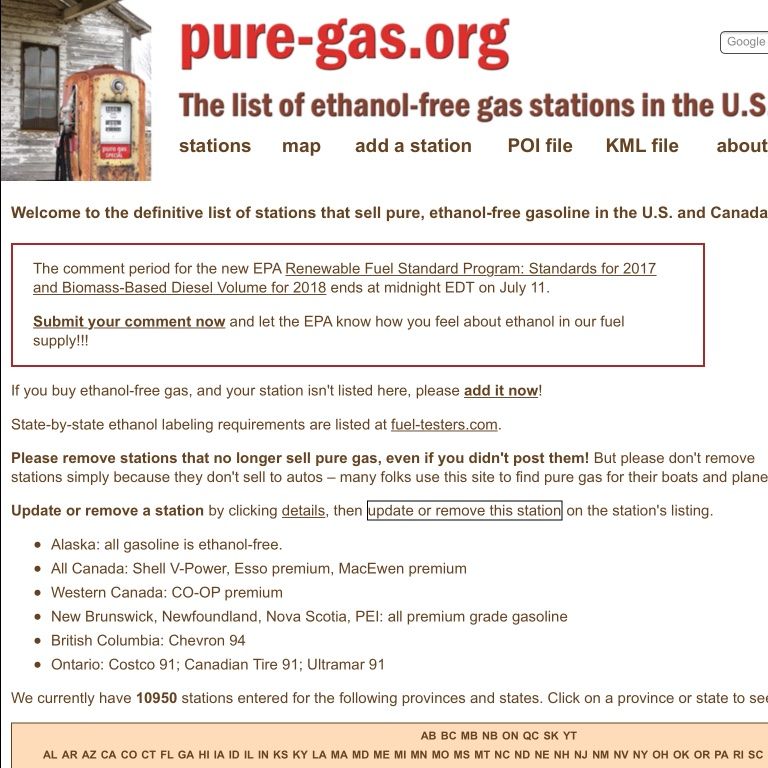 |
| There is an excellent website used to find sources of ethanol-free gasoline all around the U.S. and Canada--it's called Pure-gas.org. |
Summary
We have only had our new RIB for a little more than a week but it will have a real test on our upcoming month-long sailing trip in the Chesapeake Bay which will have already started (June 20) by the time this blogpost is published.
 |
| While cruising, this dinghy will be like our car (or pick up truck) carrying groceries, taking us to remote beaches and far away snorkeling spots. |
We will also be testing our outboard motor lift and our method of lifting the dinghy onto the foredeck. Stay tuned for more blogposts on this subject.
Thanks for following our blog!
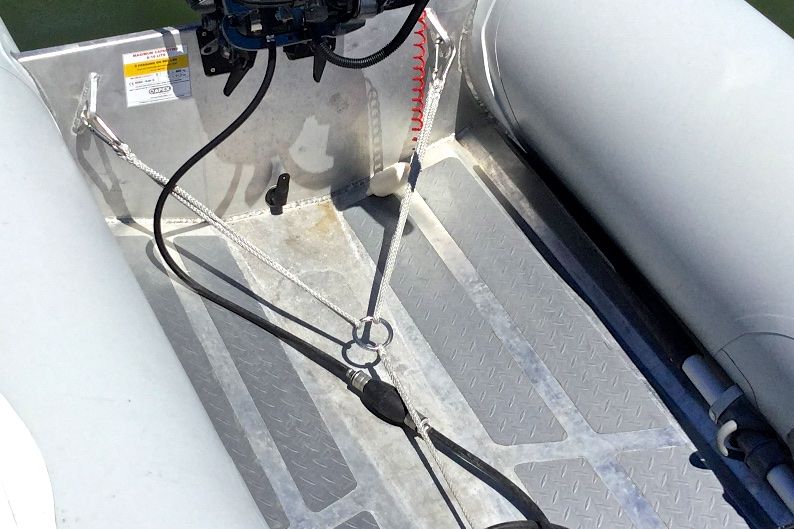
No comments:
Post a Comment